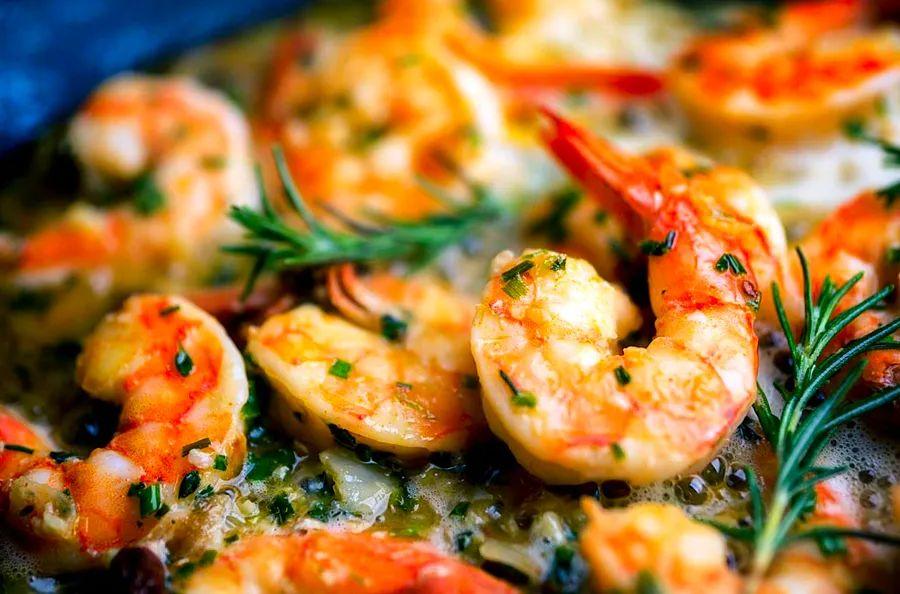5 Common Shrimp-Cooking Mistakes to Steer Clear Of

Shrimp is America’s favorite seafood for good reason: it's tasty, packed with nutrients, budget-friendly, cooks quickly for busy weeknights, and always adds a touch of elegance. Plus, it's incredibly adaptable. Whether in shrimp cocktails, gumbo, scampi, or coconut shrimp, the options are endless.
However, this beloved crustacean can be tricky to select, prep, and cook. Nobody wants to waste money on shrimp that’s either past its peak or turns out rubbery and overdone. To ensure you’re always savoring fresh, tender shrimp, here are five common mistakes to avoid.
Mistake #1: Choosing the Wrong Type of Shrimp
Shrimp comes in a wide variety of options — from raw to cooked, small Bay shrimp to giant prawns, and farm-raised to wild-caught — so there’s a perfect shrimp for any dish or budget. Don’t let the choices overwhelm you. There are just a few key things to consider when buying shrimp.
First: Wild-caught shrimp typically offers better flavor than farm-raised, though it often comes with a higher price tag.
Second: The numbers like "36/40" seen on packaging or at the fishmonger refer to the shrimp's size. These numbers estimate how many shrimp of that size fit into a pound (so, the higher the number, the smaller the shrimp). Larger shrimp tend to be more expensive, but bigger isn't always better. Opting for large shrimp makes sense if you're grilling them whole, but if you're preparing shrimp burgers, smaller sizes may be more cost-effective.
Third: Freshness is key. If you're fortunate enough to live near a fish market that gets fresh shrimp from the boat, that's your best bet. For those not close to the coast, look for shrimp that was frozen immediately after being caught. To ensure quality, cook fresh shrimp the same day you buy it, and steer clear of pre-cooked, mushy, or ammonia-smelling shrimp, which indicate spoilage. Also, avoid buying shrimp labeled "previously frozen" and refreezing it at home.
Mistake #2: Thawing Shrimp Incorrectly
Shrimp are delicate and cook quickly, so never thaw them in the microwave or in warm or hot water. Thawing them on the counter is also a no-go, as they can spoil rapidly at room temperature.
Instead, thaw shrimp overnight in the refrigerator, placed in a colander inside a bowl to catch any excess water. If you're in a hurry, seal them in a zippered bag and submerge them in cold water until they’re thawed. Avoid placing shrimp directly in water, as they can absorb it, which weakens their flavor.
Mistake #3: Cooking Shrimp Too Long
It’s easy to overcook shrimp, and chances are, you’ve done it more than once. Since shrimp can go from perfectly tender to rubbery and dry in just a few minutes, it’s crucial to monitor them closely. To get it right every time, watch for two key visual signs.
First, focus on the color and opacity. When the thickest part of the shrimp (opposite the tail) turns pink and changes from a translucent, milky look to opaque, it’s ready. If you're grilling or pan-frying, don’t wait until the shrimp is fully opaque—flip them as soon as the bottom half turns pink to avoid overcooking.
The second clue is the shrimp’s shape. A "C" shape means it’s perfectly cooked, while a tight "O" shape indicates it’s overcooked. Think of the "C" as for "cooked" and the "O" as for "overcooked" to make it easier to remember.
Shrimp cook incredibly fast—often in just one or two minutes on a hot grill—so pay attention to these visual cues and resist the temptation to cook them longer 'just to be sure' for the best outcome.

Get the Recipe: Hawaiian Garlic Shrimp Scampi
Mistake #4: Failing to Devein Shrimp
Removing the digestive tracts from shrimp is undoubtedly one of the least enjoyable tasks in cooking. While eating the dark vein won’t harm you, its taste can interfere with the shrimp’s otherwise sweet, delicate flavor. So, don’t skip the deveining step if you want the best result.
No special tools are necessary—just a sharp paring knife (avoid dull knives, which can tear the flesh). However, some chefs prefer using deveining shears, which are designed specifically for this task. These shears are safer and especially useful if you want to leave the shells on while cleaning, as they can cut through the shrimp to remove the vein while preserving the shell.
Or, to skip the hassle altogether, have your fishmonger do the deveining for you.
Mistake #5: Discarding the Shells
We’re used to peeling shrimp before cooking, but sometimes it’s better to leave the shells on. For grilling or other high-heat methods, keeping the shells intact shields the tender shrimp meat from direct flames, ensuring juicy, perfectly cooked shrimp.
You probably toss the shells without a second thought once you're done cleaning shrimp. But those shells, along with the heads, are bursting with rich flavor. Instead of throwing them away, save them to create a flavorful homemade shrimp stock. Use it as a substitute for water or meat stock in seafood dishes like jambalaya, bisque, or paella.
Evaluation :
5/5



